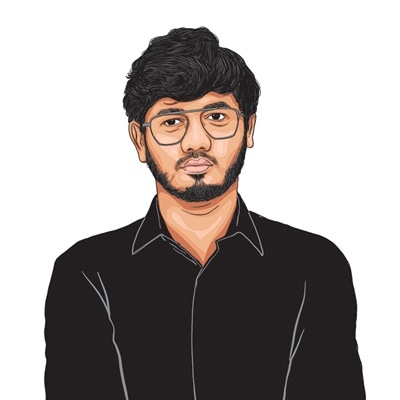Opinion Data does not polarise, distrust does. That is why we need Caste Census
When the numbers finally arrive, some cherished assumptions will crumble; others will find validation. Either way, public discourse will move from the realm of slogans to the realm of statistics
 To frame the caste census as divisive misunderstands both the purpose of democracy and the nature of caste. Division is not caused by recognition; it is caused by systemic invisibility.
To frame the caste census as divisive misunderstands both the purpose of democracy and the nature of caste. Division is not caused by recognition; it is caused by systemic invisibility. When the colonial administration completed the 1931 Census, it left behind more than just a ledger of heads. The Raj used enumeration to crystallise hierarchies and transmute prejudice into “empirical” fact. It was conducted at a time when the capacity of the census to deal with a complex social system like caste was questionable, especially in princely states, which accounted for more than one-third of India.
Coupled with colonial bias and the widespread illiteracy of the time, this effort yielded caste data whose accuracy was, at best, suspect. Many castes had virtually no voice in how census officials classified them. In the colonial census, caste was never a category of identity or justice but an instrument of control, a grid of convenience to police and embed colonial power within society.
Rather than confronting the problem, independent India chose silence, assuming that caste and other primordial identities would wither away as it charted a modern course. Except for Scheduled Castes (SCs) and Scheduled Tribes (STs), we have diligently avoided counting caste for nearly a century. This silence was based on the hope that what is not named will eventually wither. Yet caste persisted, shaping the daily lives of the Indians, even of those who deny having caste consciousness. In the process, our democracy acquired a remarkable distinction: We deal with caste daily in our polity, yet possess no accurate data.
Consider the architecture of our reservation system. From Indra Sawhney (1992) to the Maratha verdict (2021), the Supreme Court has repeatedly asked governments to produce quantifiable data before extending or fine-tuning quotas. The Mandal Commission, too, based its estimates on 1931 Census numbers and sample surveys. Since then, we have added layers of creamy‑layer exclusions, sub‑quotas, and economic criteria — all without a verifiable data set.
The consequence is two‑fold. First, policy loses legitimacy; anecdotes fill the vacuum where evidence should reside. Second, welfare delivery rewards the better-organised castes while bypassing the most deprived. A credible, disaggregated caste census would allow us to base policy on ground realities, restoring both efficacy and public trust.
The decision to hold a fresh caste census is criticised as a continuation of the divisive colonial categories. The opposite is true. The Indian state must reclaim enumeration from its colonial past and redeploy it for a moral purpose: to dismantle hierarchy, not to entrench it. Counting today is an act of accountability, a public audit of how far we have travelled from the inequities we inherited — and how far we still must go.
The distinction between the colonial and the constitutional logic of counting is also worth underlining. The British enumerated caste to freeze mobility and harden hierarchy. A republican India must enumerate to animate mobility and unlock opportunity. The colonial census essentialised identity; a nationalist census interrogates exclusion. One widened difference; the other seeks to rectify it.
Critics warn that counting caste risks deepening fissures. But much of the criticism of the caste census is actually of a particular political approach to caste, not that of the caste census itself. To frame the caste census as divisive misunderstands both the purpose of democracy and the nature of caste. Division is not caused by recognition; it is caused by systemic invisibility. Invisibility is a privilege enjoyed by those who do not need the state. For the rest, recognition is the first step towards remedy. The various social and political movements of weaker castes, especially those small in number in post-independent India, are aimed at becoming “visible to the state”.
Development-oriented politics cannot rest on the fiction of sameness; it must begin with an honest mapping of objective social markers. In India, caste is still one of the most resilient markers of not just distinction but also deprivation. A caste census conducted in this spirit is not a threat to national cohesion but a prerequisite for genuine inclusion.
The real danger lies with opportunistic actors who treat the census as a lever for sectarianism, reducing caste to a spreadsheet of loyalties, grievances, and deferred promises engineered to keep every community in calibrated discontent. Reclaiming the caste census as a developmental and ethical enterprise is the surest way to disarm that logic. Data does not polarise; distrust does.
The safeguard lies in who conducts the exercise and to what end. It is precisely here that the present political moment matters. The Modi government has staked its legitimacy on Sabka Saath, Sabka Vikas, Sabka Vishwas. Its governance record — direct‑benefit transfers, rural electrification, Ayushman Bharat — is rooted in micro-targeting the last beneficiary, not micro-managing the last vote. It has successfully navigated the complex social realities and aspirations of different castes and communities while balancing the interests of every section of society. A caste census under such a rubric can only serve the goals of Antyodaya.
As we proceed towards fulfilling the promises of Viksit Bharat, India cannot afford second-order ignorance — not knowing what we do not know. The economy we build, the welfare we design, and even the political representation will be distorted if they rest on guesstimates from a century ago. Counting caste in 2025 is not a relapse into identity politics but a leap towards factual politics. When the numbers finally arrive, some cherished assumptions will crumble; others will find validation. Either way, public discourse will move from the realm of slogans to the realm of statistics. By choosing to see ourselves clearly, we widen the possibilities of who we might yet become.
Prakash is National Vice-President of the BJP Youth-wing and Chauhan is policy consultant with the Policy, Politics and Governance Foundation





